Jinyang.com News Reporter Jiang Jun and correspondent Ling Haoxiang reported: How is mummy made? What magic does the Book of the Undead have? Why is the Nile River that floods every year a gift from God to Egypt? On December 19, the final exhibition of the “Echoes on the Nile River – The Special Ancient Egyptian Civilization Exhibition” of the Guangdong Provincial Museum at the end of the year was opened. 144 pieces (groups) and a total of 238 ancient Egyptian cultural relics were officially unveiled. Books of the Dead, small pyramids, sphinxes, etc. arrived in Guangzhou for the first time, recreating the mysterious ancient Egyptian civilization and completing a dialogue across time and space.
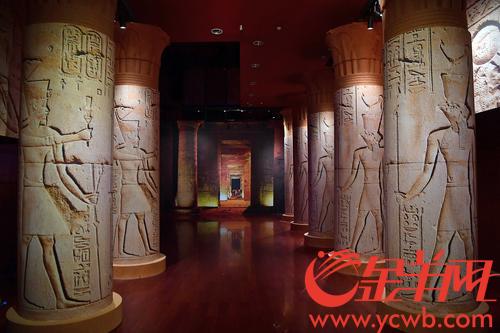 The Echoes on the banks of the Nile – Special Exhibition of Ancient Egyptian Civilization Jinyang.com reporter Deng Bo
The Echoes on the banks of the Nile – Special Exhibition of Ancient Egyptian Civilization Jinyang.com reporter Deng Bo
The three-dimensional and vivid ancient Egyptian civilization
This exhibition shows ancient Egyptian civilization from three perspectives: blessings from the gods, exploring immortality, and the Nile River. As a symbol of ancient Egyptian civilization, mummies, books of the dead, small pyramids, sphinxes, etc. have all arrived in Guangzhou for the first time. CinemaThe huge body of the lion-headed man, the statue of the Lion-headed man with the deification of Amon, and the solemn world of faith together with many small bronze statues, have created an ancient Egyptian solemn world of faith.
What’s special about this exhibition is that Komiks constructs a three-dimensional and vivid ancient Egyptian civilization for the audience, where viewers can enjoy the headrests, sandals, and their exquisite accessories and clothing.
All the exhibits in this special exhibition are from the Egyptian Museum in Turin, Italy, which is outside Egypt’s native place. Cinema, the world’s largest collection of ancient Egyptian cultural relics.
The exhibition lasts from December 20, 2018 to March 20, 2019 for three months. During the exhibition, the museum will also provide multiple academic lectures and audience interaction activities.
 Cinema on the banks of the Nile – Special Exhibition of Ancient Egyptian Civilization Golden Sheep Reporter Deng Bo
Cinema on the banks of the Nile – Special Exhibition of Ancient Egyptian Civilization Golden Sheep Reporter Deng Bo
Guide of the Statue of Sekhomite
Sekhomite
Sekhomite
Sekhomite
Sekhomite
Sekhomite
Sekhomite
Sekhomite
Sekhomite
Sekhomite
Sekhomite
Sekhomite
Sekhomite
Sekhomite
Sekhomite
Sekhomite
Sekhomite
Sekhomite
Sekhomite
Sekhomite
Sekhomite
Sekhomite
Sekhomite
Sekhomite
Sekhomite
Sekhomite
Sekhomite
Sekhomite
Sekhomite
Sekhomite
Sekhomite
Sekhomite
Sekhomite
Sekhomite
Sekhomite
Sekhomite
Sekhomite There should have been a crown or a special hat on the hair cover, but now there is only a corresponding base connecting the headgear.
The other statue of Sekhomite on the right is placed on the side of the body, and the left arm is bent on the front abdomen, holding a scepter that looks like a papyrus in his hand. She was wearing a tight robe and the sun wheel with the Holy Snake logo was placed above the three-point hair cover.
SeKomiks is a goddess with a lion’s head and a female body. She is the daughter of the Sun God La, and is considered the God of War and the God of Destruction. For the ancient Egyptians, when the power of the goddess could not be controlled, it would pose a threat to the entire human race. Therefore, in ancient Egypt, there were many festivals and rituals to calm the wrath of the goddess and hope to get her protection.
During the reign of the ancient Egyptian king Amenhotep III, a large number of standing and sitting statues of the goddess Sekhomite were made, distributed in the capital Thebes, the king’s tombs on the west bank of the Nile, and the Temple of Mut on the east bank. The Egyptian Museum in Turin contains 21 statues of the goddess Sekhomite, all from the Temple of Muth in Karnak in Thebes region. The two statues on display this time are two of the 21 statues.
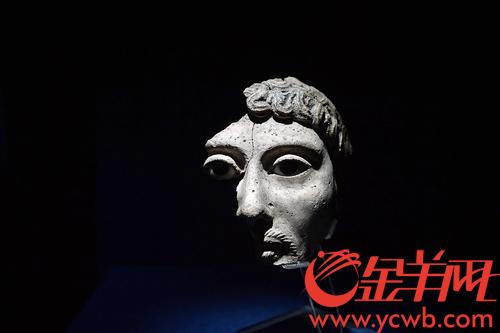 Echoes on the banks of the Nile River—Special Exhibition of Ancient Egyptian Civilization Jinyang.com reporter Deng Bo
Echoes on the banks of the Nile River—Special Exhibition of Ancient Egyptian Civilization Jinyang.com reporter Deng Bo
Book of the Dead
The mysterious “DeadKomiks Spiritual Book” The exhibits are 3 meters long and are restored to the content of the 30 chapters of Komiks and are written in vertical lines of hieroglyphs. The Book of the Dead is a document that has appeared in the New Kingdom of Ancient Egypt to provide guidance for tomb rituals. It contains various yells to praise gods, mantras to subdue demons, and prayers to help the deceased overcome all obstacles in the underworld.
This book of the dead is from right to left: in the testimony of God Osiris, the next dead person is guided by God Anubis; a deceased expresses respect to the gods in the “field of reeds”; Osiris determines the fate of each deceased in the Court of Justice.
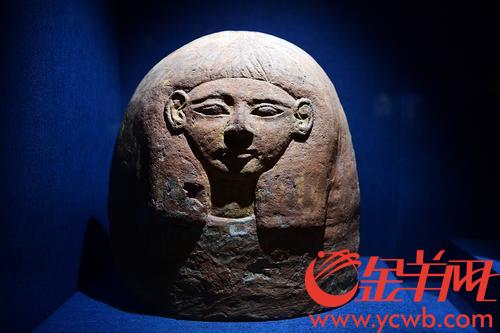 Echoes on the banks of the Nile River – Special Exhibition of Ancient Egyptian Civilizations Golden Sheep Network Reporter Deng Bo
Echoes on the banks of the Nile River – Special Exhibition of Ancient Egyptian Civilizations Golden Sheep Network Reporter Deng Bo
Consu Pyramid
Stones in the shape of pyramids usually appear on the spire of the pyramid or obelisk, are symbols of the sun. The carved patterns of the tower body express the worship and awe of the sun by the ancient Egyptians.
The east side of this small pyramid carves the image of a scarab, symbolizing the rise of the sun. The west side of the small pyramid carved the eagle-headed god Raharati, which is the union of the sun god and the “Hokao of the Horizon”, as a symbol of the horizon; the other sides carved the image of the tomb owner and his relatives kneeling to worship the sun god. On one side, there is the image of the sun god Atum who is swimming in the sky by boat.
The owner of this small pyramid is called Consu, a craftsman from Delmadina village. The people living in this village were mainly craftsmen who built tombs for the Valley of Kings and Queens. There are many such small pyramids in the cemetery of the village.
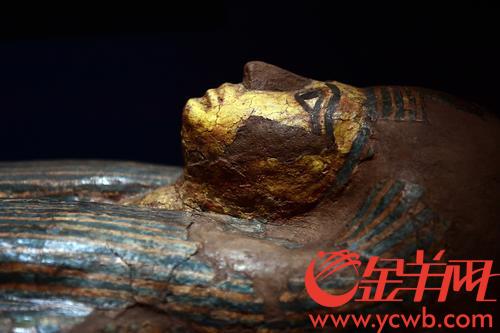 The echoes on the banks of the Nile River——The special exhibition of ancient Egyptian civilization Babaylan Jinyang.com reporter DengThe whole body of the purpadi Armonimov and the humanoid coffin is wrapped in bandages and covered with a mesh. The Komiks protects the deceased from being violated by the devil or evil spirits. The mesh cover is decorated with four sons of scarab and Horus, which can further enhance the protection energy. If the mummy is still damaged under these protective measures, the deceased’s body can still be replaced by a human-shaped wooden coffin. The coffin is made of painted wood, the shape is consistent with the body and has intricate painted decorations inside.
The echoes on the banks of the Nile River——The special exhibition of ancient Egyptian civilization Babaylan Jinyang.com reporter DengThe whole body of the purpadi Armonimov and the humanoid coffin is wrapped in bandages and covered with a mesh. The Komiks protects the deceased from being violated by the devil or evil spirits. The mesh cover is decorated with four sons of scarab and Horus, which can further enhance the protection energy. If the mummy is still damaged under these protective measures, the deceased’s body can still be replaced by a human-shaped wooden coffin. The coffin is made of painted wood, the shape is consistent with the body and has intricate painted decorations inside.
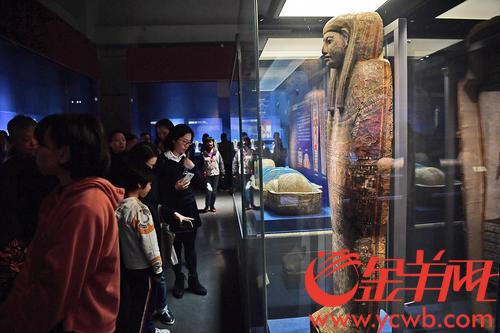 Echoes on the banks of the Nile River – Special Exhibition of Ancient Egyptian Civilizations Jinyang.com reporter Deng BabaylanEmerals’ sandals are very “beautiful”, and today they can lead the fashion – the fishbone-style soles are bent at the toes and connected to the straps that fix the ankles. In fact, the ancient Egyptians were barefoot, and only royal nobles and clergy were qualified to wear shoes, and they were only worn during rituals.
Echoes on the banks of the Nile River – Special Exhibition of Ancient Egyptian Civilizations Jinyang.com reporter Deng BabaylanEmerals’ sandals are very “beautiful”, and today they can lead the fashion – the fishbone-style soles are bent at the toes and connected to the straps that fix the ankles. In fact, the ancient Egyptians were barefoot, and only royal nobles and clergy were qualified to wear shoes, and they were only worn during rituals.
What’s special about the shoe is that its upper is very low and extends from the front of the foot along both sides of the foot to the heels. The edges of the shoe are decorated with lace, the braiding of the insoles is thoughtful, and the fishbone-style insoles bent at the toes and connected to the straps that hold the ankle. These sandals are usually exquisitely made.
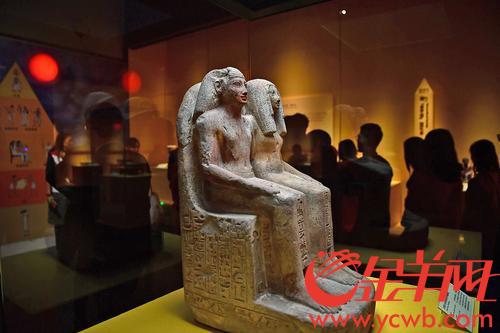 Echoes on the banks of the Nile River—Special Exhibition of Ancient Egyptian Civilization Jinyang.com reporter Deng Bo
Echoes on the banks of the Nile River—Special Exhibition of Ancient Egyptian Civilization Jinyang.com reporter Deng Bo
Animal-shaped makeup spoon
Ancient Egyptians Babaylan‘s eye makeup influenced many women in later generations, and makeup spoons wereOne of the necessary items for the ancient Egyptians to apply makeup. Among the exhibits is an animal-shaped makeup spoon, with antelope shape and a sunken body to hold cosmetics. The side carefully depicts the head features and can be used for handheld. The four hooves are tied together, showing that it is a sacrifice.
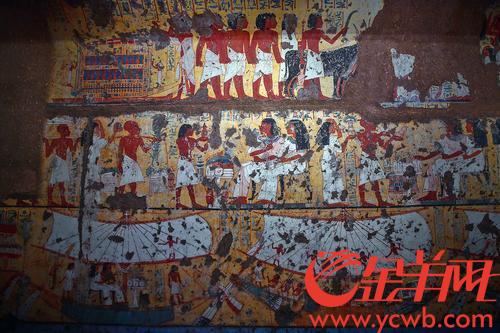 The Echo on the Nile RiverBabaylan——A Special Exhibition of Ancient Egyptian Civilization Jinyang.com Reporter Deng Bo
The Echo on the Nile RiverBabaylan——A Special Exhibition of Ancient Egyptian Civilization Jinyang.com Reporter Deng Bo
Egypt StudiesBabaylanArt Lecture
1. Ancient Egyptian Code: Start with the Abukao Stone Stele
Speaker: Professor Li Xiaodong
Time: December 20 (Thursday) at 14:30 pm
Spot: Academic Lecture
2. View Religious Beliefs from Egyptian Art
Speaker: Professor Pu Muzhou
Time: January 12 (Saturday) at 14:30 pm
Spot: Academic Lecture
3. How ancient Egyptians “art” their lives
Speaker: Professor Huang Zixuan
Time: January 26 (Saturday) 1 am Babaylan0:00
Spot: Academic Lecture Hall
4. “The Book of the Dead” and the Faith of the Ancient Egyptians
Speaker: Professor Yan Haiying
Time: March 2 (Saturday) 14:30 pm
Spot: KomiksAcademic Lecture Hall